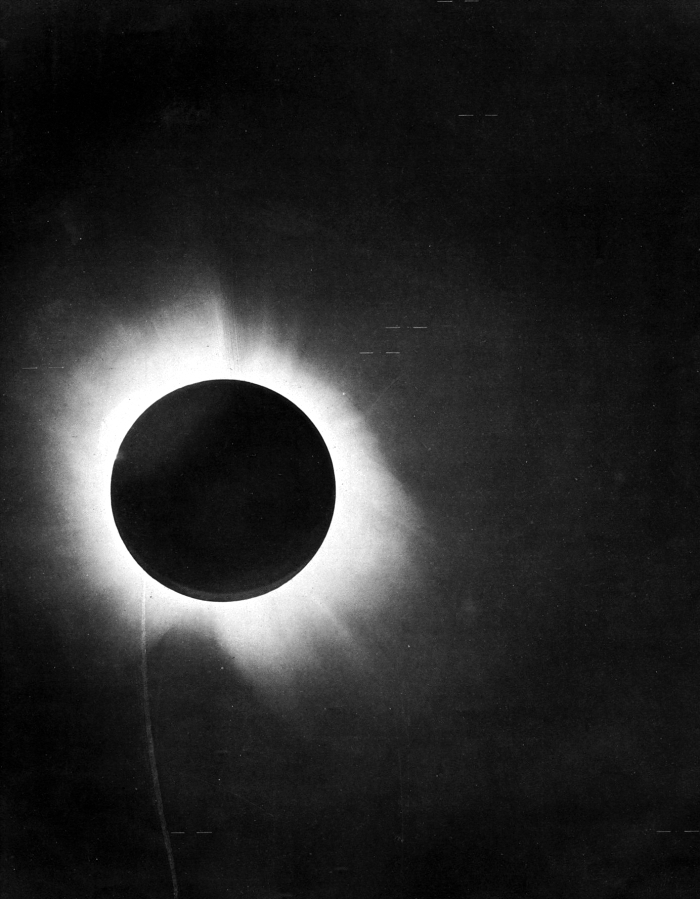
One of Arthur Eddington’s photographs of the great solar eclipse of May 29, 1919, which “proved” Einsteins General Theory of Relativity. From the Wikipedia and in the public domain in the United States because of its age.
There’s a lot of discussion in scientific circles about the upcoming solar eclipse. And the world is dividing between those going and those not going. If you have a chance, I highly recommend it. The three-dimensionality of the corona, the shadow bands, and the wildlife driven to insanity are awe inspiring. We understand for the first time how primitive people must have felt from such a sight, and in our own way are just as filled with wonder.
My thoughts drift to what is perhaps the most important solar eclipse of modern times. The great eclipse of May 29,1919. Figure 1 is one of the photographs take of that eclipse by British Astronomer Arthur Eddington (1882-1944). Figure 1 is one of the photographs that Eddington took of that eclipse. What is significant are the little star trails. Look closely you can see them. Just four years earlier, Albert Einstein published his General Theory of Relativity . which predicted that a massive object like the sum would bend like as it passed the star. This would be seen as a deflection in position. Eddington’s photographs and measurements offered the first proof of the General Theory.
Black holes, worm holes, warp drives. It all fuels the inguisitive imagination. It all began with these photographs.
